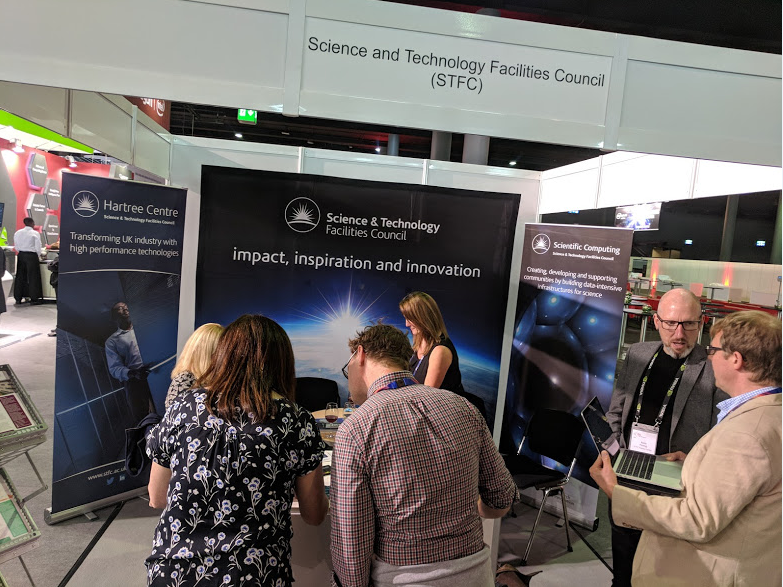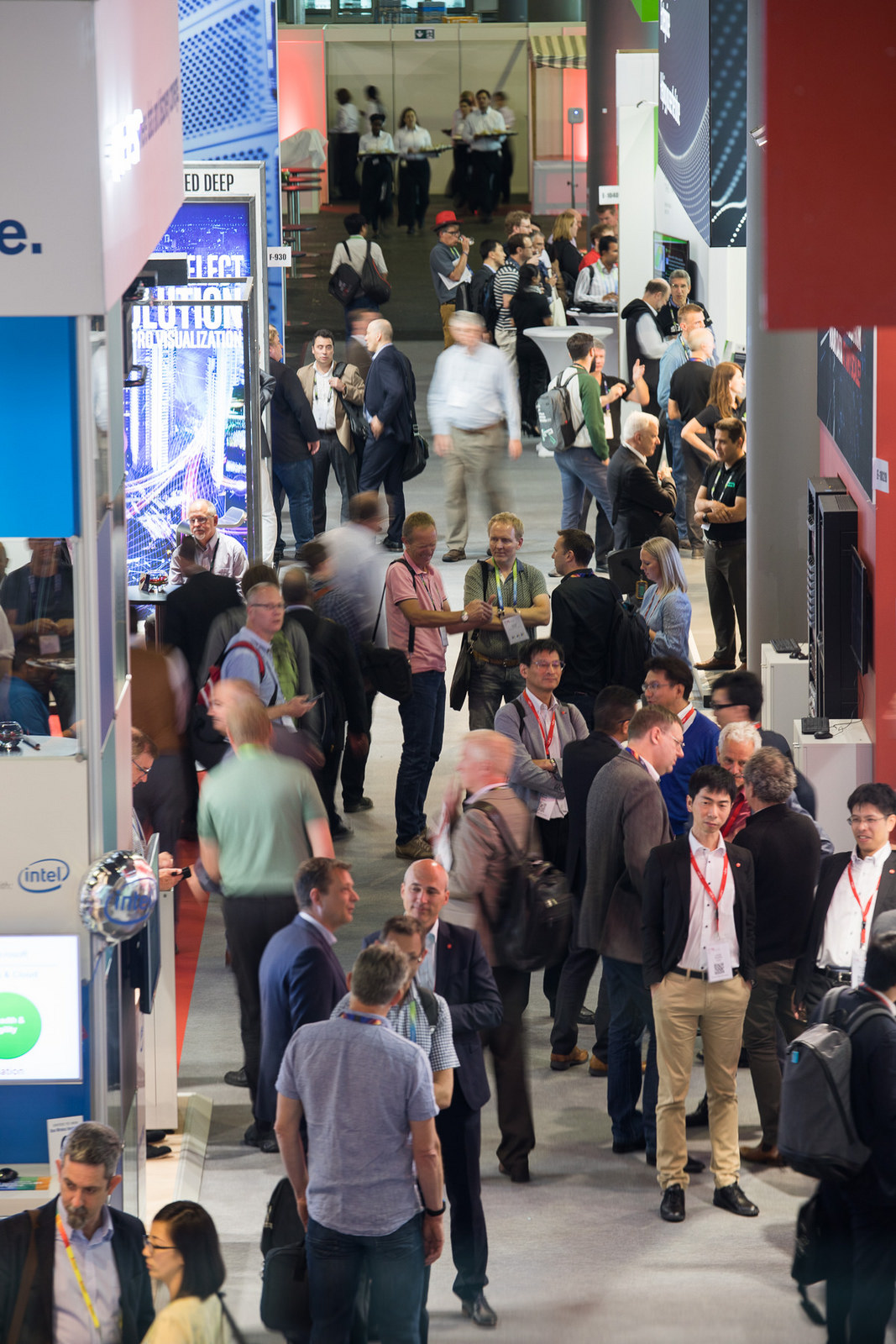More than 3,200 academic, industry and research professionals from 60 countries attended the event to hear about the latest technologies and research projects from the 450 speakers who took part in the comprehensive programme of talks, workshops and tutorials, as well as exploring the many booths in the very large exhibition hall.
STFC once again had a strong presence at this event, with an exhibition booth welcoming a steady stream of delegates for its busiest year so far. Colleagues from both the Scientific Computing Department (SCD) and the Hartree Centre were on hand to explain what we  do and discuss the latest developments. We were delighted to see people that we knew and have worked with for many years amongst the visitors to our booth, as well as some new collaborators who dropped by just to say hello.
do and discuss the latest developments. We were delighted to see people that we knew and have worked with for many years amongst the visitors to our booth, as well as some new collaborators who dropped by just to say hello.
SCD's Jon Roddom, Ian Johnson and Herve Barjat attended conference sessions to gain new insights on products and services which they use in their own work, as well as sharing knowledge and experiences with other delegates in the 'Birds of a Feather' forums. Several of our Hartree Centre colleagues were involved in presenting talks and posters and, on the last day of the conference, represented STFC at 'Women in HPC' which focused on diversity across the HPC community.
This year's conference keynote was delivered by Maria Girone, CERN Openlab Chief Technology Officer. She discussed the demands of capturing, storing and processing the large volumes of data generated by the Large Hadron Collider (LHC) experiments. SCD is no stranger to handling LHC data as we provide CPU, Disk and Tape resources at the STFC Rutherford Appleton Laboratory, one of the 14 Tier-1 data sites around the world, and we have disk storage that enables physicists to run their analyses. When the LHC is operating  there are 40 million collisions (data points) occurring every second, and LHC experiments produce up to 50 PB of data each year.
there are 40 million collisions (data points) occurring every second, and LHC experiments produce up to 50 PB of data each year.
Maria Girone said, “Looking for a phenomena associated with new physics involves searching for one event in a thousand-billion – or finding a particular grain of sand amongst 20 volleyball courts."
The challenges associated with such large volumes of data will become even bigger with the launch of the next generation 'High Luminosity' LHC in 2026, when the computing capacity required is expected to be 50 – 100 times greater.
ISC18 was a successful and productive event for those of us who were there. A big thank- you to everyone who visited our booth to find out more about what we do – it was great to meet you and we look forward to seeing you again. And thanks also to those with whom we debated some of the issues surrounding data-intensive science, storage, applications, efficiency and diversity, to name but a few of the topics discussed.
More information about ISC18
